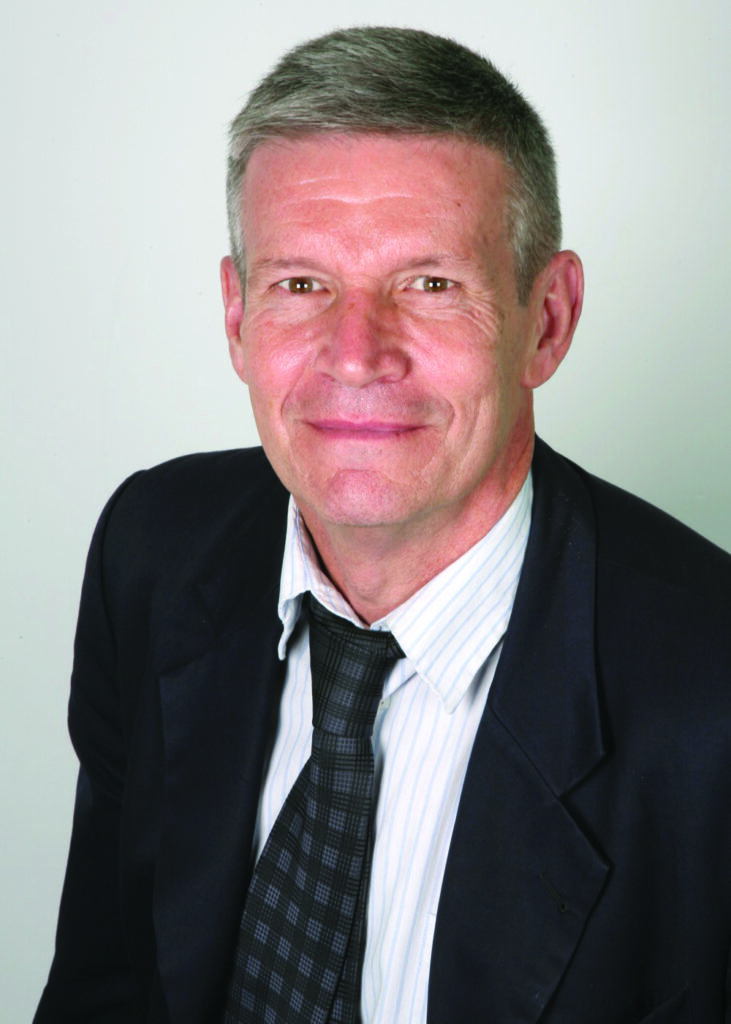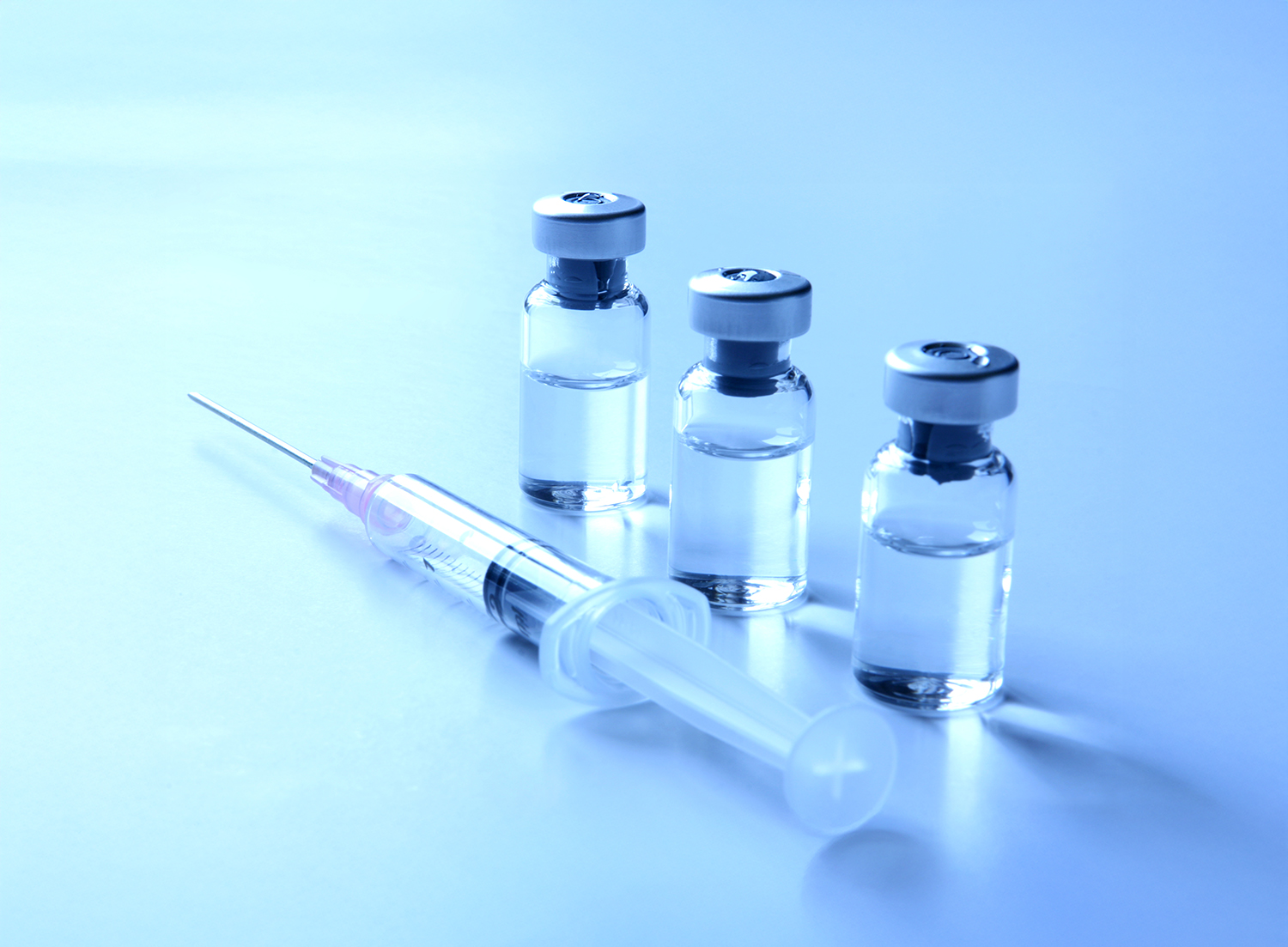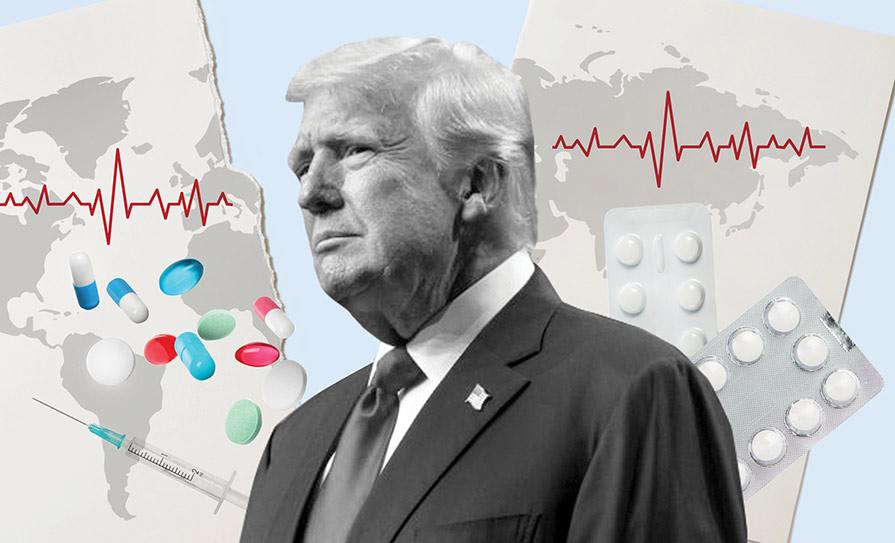Catherine Reilly delves through national and international guidance on when healthcare workers should wear respirator masks in this pandemic and asks if Ireland has taken the right approach
It is not simply ‘about the mask’ when examining occupational safety of healthcare workers (HCWs) in a pandemic. Protecting staff from a dangerous respiratory pathogen, such as SARS-CoV-2, is reliant on a wide system of controls.
In light of Ireland’s high recorded rate of HCW infection, and to improve pandemic response, every element of this system warrants interrogation. However, masks have been at the core of debate and dispute.
On 22 April, the HSE Health Protection Surveillance Centre (HPSC) advised routine wearing of surgical masks for HCWs. This update followed a recommendation from the national public health emergency team (NPHET) on 21 April, acting on advice it received from its expert advisory group (EAG) on 10 April. The Irish Nurses and Midwives Organisation had also strongly lobbied for this change.
Prior to this update, the HSE advice was that HCWs should wear surgical masks when caring for patients with suspected or confirmed Covid-19 (respirator masks are recommended for aerosol-generating procedures (AGPs)).
But early warnings from healthcare institutions in China referenced the need for “aggressive” measures to protect HCWs and cited evidence of spread from individuals without symptoms.
“Recent evidence suggests that even someone who is non-symptomatic can spread Covid-19 with high efficiency, and conventional measures of protection, such as face masks, provide insufficient protection,” outlined a research letter to The Lancet Respiratory Medicine from authors at Chinese PLA General Hospital, Beijing; National Institute for Food and Drug Control, Beijing; and Yale University School of Medicine, published online on 13 February.
Setting out a number of cases of “subclinical infection”, the authors stated that the situation warranted “aggressive measures (such as N95 masks, goggles, and protective gowns) to ensure the safety of healthcare workers during this Covid-19 outbreak, as well as future outbreaks, especially in the initial stages where limited information about the transmission and infective potency of the virus is available.”
Decision-making
From February to April, the issue of routine masking of HCWs dominated several EAG meetings. Decision-making on this important health and safety issue was essentially outsourced from the HSE at corporate level to the expert group, some of whom queried the “governance” surrounding the decision.
Of note, while the EAG has occupational medicine representation, neither NPHET nor the EAG include a member from occupational hygiene or exposure science. A lack of supportive evidence was cited by some members and fears expressed over the supply chain before a majority decision was reached in favour of the intervention (see panel).
But other aspects of national mask guidance in healthcare have also raised questions– including around when to use respirator masks.
The European Centre for Disease Prevention and Control (ECDC) and the US Centres for Disease Control and Prevention (CDC) recommend that HCWs wear respirator masks when caring for suspected or confirmed Covid-19 patients (medical masks can be used if respirators are unavailable).
However, Irish national guidance only advises respirator use (specifically FFP2) for HCWs when carrying out AGPs (and “may be appropriate” to wear if there is a risk of an urgent AGP), a position in line with that of the World Health Organisation (WHO).
The HPSC guidance, last updated in September, also states that “Covid-19 is not considered to be an airborne pathogen”, a statement included since April. A number of major public health institutions acknowledge that airborne transmission of SAR-CoV-2 can occur in certain circumstances and further research is needed to understand its precise role.
In July, a scientific brief from the WHO stated that more research was urgently needed to elucidate the relative importance of different transmission routes, including the role of airborne transmission in the absence of AGPs.

Some studies have also argued that respirators provide better protection for HCWs against respiratory infections, even those presumed to be spread predominantly by ‘droplet mode’ (‘The efficacy of medical masks and respirators against respiratory infection in healthcare workers’, Influenza and Other Respiratory Viruses, 2017).
According to the ECDC, it is unclear whether respirator masks provide better protection than medical face masks against other coronaviruses and respiratory viruses, such as influenza.
However, the Centre has noted that a recent systematic review and meta-analysis estimated respirators may have a stronger protective effect than medical face masks.
The authors of this review, while acknowledging its limitations, stated that “for healthcare workers and administrators, our findings suggest that N95 respirators might be more strongly associated with protection from viral transmission than surgical masks” (‘Physical distancing, face masks, and eye protection to prevent person-to-person transmission of SARS-CoV-2 and Covid-19: A systematic review and meta-analysis’, The Lancet, June 2020).
Greater use of respirator masks for HCWs was deployed in China. The Report of the WHO-China Joint Mission on Coronavirus Disease 2019 (Covid-19), published in late February, stated that transmission in healthcare and amongst HCWs in China was not a major driver of infection and noted the “paramount importance” accorded to preventing HCW infection.
In an appendix to the main report, under a heading of ‘detailed technical findings’, it stated suspect cases were isolated in normal pressure single rooms and wore a surgical mask (for source control).
“Staff in China wear a cap, eye protection, N95 masks, gown and gloves (single use only). In Wuhan it is necessary for most suspects to be cohorted in a normal pressure isolation ward. Staff wear PPE continuously, changing it only when they leave the ward.”
HPSC guidance is based on an assessment that SARS-CoV-2 is “in most circumstances” a contact and droplet transmitted infection and “the evidence that surgical masks offer equivalent protection to respirator masks in this context”, said a HSE spokesperson.
They accepted differences in international guidance on this issue. “In training webinars delivered by the national team this is clearly and openly acknowledged and discussed; and the fact that it causes uncertainty and anxiety for healthcare workers is acknowledged.”
If the IPC view was that respiratory masks were superior “it should certainly be stated clearly in the guidance as to fail to do so would be dishonest”.
They also strongly emphasised that mask wearing was “only one element” of the IPC precautions required.
Different views
In Irish healthcare there are different views on HPSC guidance regarding respirator masks, and some departures from the advice.
Speaking to the Medical Independent (MI), Prof Jack Lambert, Consultant in Infectious Diseases at the Mater Misericordiae University Hospital, Dublin, believed the HPSC guidance was “adequate” on respirator masks.
Prof Lambert, a strong and early advocate of routine HCW masking, said “if you are in the emergency room seeing a patient who is not coughing and don’t suspect have Covid, using a plain surgical mask is adequate. So I just think there is a spectrum…. But you do need it if you are up in the ICU and somebody is intubated with confirmed Covid and you are aerosolising Covid particles into the atmosphere in that room.”
“I am quite comfortable using the guidance from the HPSC; the secret is to meticulously follow the guidelines, wash your hands, and do all the other things as well.”
However, a respiratory consultant at a major acute hospital told MI that “in practice” Covid-19 patients are isolated in single rooms where possible and all entering that room wear an FFP2 mask “irrespective of AGP use in that room”.
“When dealing with all patients who are presumed negative, we wear surgical masks unless in an open unit with AGP use, when FFP2 are worn.”
The HPSC guidance on masks, when caring for suspected and confirmed Covid-19 cases, has been brought to the attention of the Health and Safety Authority (HSA), MI has learned.
“The recommendation in the HSE guidance of wearing surgical masks when caring for confirmed and suspected Covid-19 cases has been brought to our attention and we continue to engage with the HSE on the current advice on infection prevention control measures,” commented the HSA’s spokesperson.
“The HSE guidance is aligned with the WHO advice on the use of masks. It is important that the other infection prevention control measures in addition to the wearing of masks are followed to prevent the spread of the coronavirus in the workplace.”
Since the beginning of March, the HSA has undertaken 87 inspections and 28 investigations in the health and social care sector. During the same period, the Authority has received 89 complaints related to Covid-19 from this sector. The complaints relate to “a range of issues including welfare facilities, social distancing, PPE and the cleaning of workplaces”.
The spokesperson added: “Where the matter of the complaint falls within our remit, the Authority has followed up. This follow-up involves a range of measures from correspondence/contact with the relevant personnel at the workplace up to an onsite inspection as appropriate.”
Mask or no mask: Anatomy of a debate
The issue of whether to recommend routine wearing of masks for healthcare workers (HCWs) during the pandemic was discussed for several weeks at the expert advisory group (EAG) of the national public emergency team (NPHET).
A majority recommendation in favour of the intervention was reached on 10 April. Fears about lack of evidence and impact on mask supplies were expressed.
The HSE at a corporate level waited to act upon the advice of the expert group, which convened in early February. At the EAG meeting on 18 March, guidance on mask wearing for HCWs came under particular scrutiny. The reported comments are attributed to members in published meeting minutes.
According to the minutes, Prof Karina Butler, Chair of the national immunisation advisory committee and Consultant in Paediatric Infectious Diseases, asked if all HCWs should be wearing masks routinely.
Prof Colm Bergin, Consultant in Infectious Diseases, advised that some centres were already providing masks for all staff. However, HSE National Clinical Lead for Antimicrobial Resistance and Healthcare-Associated Infections (AMR/HCAI), Prof Martin Cormican, said in some hospitals where this was ongoing, HCWs were “pulling them up and down and not wearing them appropriately”. Prof Cormican, a Consultant Microbiologist, said it was “clear that there is no evidence for routine mask wearing and it could actually be dangerous if they are not worn properly”.
“He felt we could not recommend the use of a critical resource without good evidence that it would reduce the spread of infection. The EAG agreed that the routine use of masks is not recommended at this point.”
On 25 March, the meeting discussed a paper on AGPs – aerosol generating procedures – and heard that, in regard to AIRVO, which is used for the treatment of spontaneously breathing patients who would benefit from receiving high flow warmed and humidified respiratory gases, a cautious approach was being taken due to lack of evidence.
Prof Butler queried why “the same cautious approach” was not being taken on nebulisation. “[Prof Butler] asked, is a surgical mask adequate for staff protection during nebulisation?” The EAG sought that the evidence for transmission via nebulisation be kept under review.
On widespread mask use by HCWs in clinical areas, the meeting acknowledged that this had not been recommended by the group to date. However, according to Prof Bergin, “the absence of evidence is not evidence of absence”. The next five lines of the meeting minutes were redacted.
In the next unredacted passage, the minutes read: “Can we recommend something if the supplies aren’t there? Others acknowledged this is happening in other hospitals too.”
Prof Cormican said there was no evidence to suggest wearing masks would reduce presymptomatic transmission. He again argued that routine use of masks could increase the risk of transmission.
HSE National Clinical Advisor and Group Lead, Acute Hospitals, Dr Vida Hamilton, who is a Consultant in Anaesthesiology and Intensive Care, agreed that routine use of a “critical resource” such as masks could not be supported without scientific evidence.
However, while discussion continued at the EAG, a number of healthcare facilities had departed from HSE guidance and recommended HCWs wear masks for all patient care. In at least one example, the proposed means of implementing this measure was problematic (where a hospital recommended three masks per day if working a 12-hour shift and two masks per day for working less than 12 hours).
On 27 March, the EAG again returned to the matter, where partially redacted minutes indicated that routine wearing of masks at a particular healthcare facility was discussed.
At the EAG meeting on 1 April, Dr Hamilton stated that using personal protective equipment (PPE) inappropriately may lead to increased risk due to inadequate adherence to infection prevention and control (IPC) practices, “but that this is a losing battle and maybe a different approach needs to be considered”.
She suggested that “we need to ensure that those using PPE for routine care aren’t taking part in risky behaviours that could compromise their safety”.
Prof Butler recognised that masks were not the only answer in terms of preventing transmission. “They must be part of a bundle with handwashing and other IPC measures. [Prof Butler] emphasised the importance of credibility and supporting staff in this challenging time,” according to minutes.
Against this backdrop, the Irish Nurses and Midwives Organisation (INMO) was advocating for a change in policy in favour of routine HCW masking.
On 3 April, in correspondence to HSE Chief Clinical Officer Dr Colm Henry, INMO General Secretary Ms Phil Ní Sheaghdha referenced “feedback from our South Korea, Taiwan and Chinese colleagues via their national associations affiliated to International Council of Nurses, that general wearing of masks was beneficial to containing the spread of Covid-19”.
In the face of uncertainty about asymptomatic spread, the INMO considered “that we must err on the side of caution”.
At the next EAG meeting on 5 April, when discussing new IPC guidance for long-term care facilities, another lengthy discussion on masks ensued.
Prof Butler asked about HCWs wearing masks when in close contact with a patient, ie, in providing care within two metres. There was a long discussion among the group. Prof Cormican said this was not recommended in the document, even for HCWs working on derogation.
Prof Butler emphasised that the evidence for asymptomatic transmission was growing and there may be a benefit to wearing face masks. Prof Bergin agreed with Prof Butler. Dr Hamilton noted the challenges of maintaining social distancing in hospitals.
Dr Margaret O’Sullivan, Specialist in Public Health Medicine, shared concerns around asymptomatic transmission, mentioning examples of positive tests in asymptomatic nursing home residents in the south.
Dr Lorraine Doherty, HSE National Clinical Director for Health Protection, emphasised the importance of education on IPC and she shared Prof Cormican’s concerns on the potential for harm.
There was a vote on the use of masks for all patient care within two metres in nursing homes, with minutes partially redacted. Chair Dr Cillian De Gascun, Director of the National Virus Reference Laboratory, said the issue would be kept under review.
On 8 April, the meeting heard that 23 per cent of infections were in HCWs, a similar proportion to Spain.
Consultant in Emergency Medicine Dr Gerard O’Connor asked for an overview of PPE supplies and Prof Cormican said there was “a gap” between what was needed and what was possible.
Prof Cormican said there were two questions to consider – what is best practice; and what is the best we can do with what we have? He suggested the EAG should review the evidence and decide on what was best practice.
A masks group, which appears to have been established by the HSE, would decide what was feasible, he posited.
Ms Helen Murphy, Nurse Lead, HSE AMR/HCAI Response Team, said in
other circumstances “we often adopt a precautionary approach when we don’t have evidence”. Ms Murphy said “we must acknowledge the high level of anxiety”. She was concerned that the length of time being taken to decide was “becoming an issue”.
Specialist in Public Health Medicine Dr Derval Igoe, who chaired this meeting, reminded the group there were “high levels” of HCW infection and “many” close contacts of cases were working on derogation. Prof Bergin asked for clarity over the governance of the decision on masks.
Dr Igoe acknowledged Prof Bergin’s point on the governance of the decision but said that “we need a view to provide to the mask subgroup”.
Specialist in Public Health Medicine Dr Lelia Thornton asked for the terms of reference of the masks group and Dr Hamilton queried if the masks group was established “because of the tied voting at EAG”. Prof Butler emphasised that “this is a time-critical decision” and that “we must decide soon to impact the surge”.
EAG agreed an “urgent recommendation” on use of masks in healthcare settings was required. However, this recommendation needed to be informed by certain material, including a HIQA evidence review.
They also requested up-to-date forecasts on the predicted impact of the pandemic and significance of presymptomatic transmission in the Irish context.
The group also sought an update from the HSE on PPE supplies, including the number of masks available and the number of masks required if recommendations on their use changed.
On 10 April, a special meeting was held by the EAG on masks. Chair Dr De Gascun said that based on current use, there was a 10-day supply of masks. The final HIQA review and modelling data were awaited.
Dr Igoe said there was mounting evidence for presymptomatic transmission. She referenced the precautionary principle and the requests from the group for the papers that would help with decision-making.
Prof Butler asked if it was the role of the EAG to consider operational issues or if they should make a recommendation based on the evidence. Dr De Gascun clarified that the EAG should focus on the science and other groups needed to consider the operational issue.
A vote was held on the first question on the use of masks by HCWs when a distance of two metres could not be maintained from the patient. Some parts of this section were redacted.
Prof Cormican asked that it be recorded he voted against the motion. He felt widespread mask use “rapidly degenerates” into poor practice, which could increase the risk of Covid-19 transmission. He also feared the recommendation would impose “a near impossible challenge” to the supply chain.
However, Dr Doherty noted that the group was not voting on the matter of impact on supply. Prof Cormican “asked that we clarify that masks must be worn properly, according to IPC advice, and does not replace other IPC measures”.
Regarding the second question, on mask use by HCWs where physical distancing was not possible with other HCWs, Prof Cormican “asked that we clarify that this is in the workplace only”.
Intensive Care Consultant Dr Colman O’Loughlin added that “we don’t know that masks will reduce presymptomatic transmission” and felt this vote was based on sentiment rather than evidence.
Prof Butler said there was some evidence from Beijing and Hong Kong on the efficacy of masks. She said that “as clinicians we learn from individual situations too, not just RCTs…. We can’t assume people won’t wear the masks appropriately – they have a strong reason and motivation to do this properly in the current context.”
On 15 April, the EAG Chair explained that the recommendation regarding the wearing of masks for close patient contact went to NPHET, which “accepted the recommendation in principle” for near patient care but not for HCWs when physical distancing cannot be maintained.
The issue needed further review in terms of ensuring there would be a sufficient supply of masks to implement this change.
On 21 April, the NPHET accepted the advice of the EAG of 10 April on the use of surgical facemasks, such that they should be worn by HCWs when providing care to patients within two metres, regardless of the Covid-19 status of the patient; and should be worn by all HCWs for all encounters, of 15 minutes or more, with other HCWs in the workplace where a distance of two metres cannot be maintained.
As of September, HCWs are also required to wear a surgical mask when in busy public areas of healthcare facilities even if they do not expect to be within a distance of two metres of another person for 15 minutes or more.
On the week the guidance was updated (19-25 April), the proportion of HCWs in the total confirmed Covid-19 cases was 31.6 per cent, according to Health Protection Surveillance Centre data. This proportion peaked at 40.6 per cent for the week 10-16 May (HCWs comprising 486 of 1,196 cases) before dropping to 24.8 per cent (146 of 589 cases) for 17-23 May, and by 7-13 June, this figure was 13.7 per cent (16 of 117 cases).
A number of doctors told the Medical Independent (MI) they believed the
guidance had a notable effect in reducing infections. According to a specialist in occupational medicine at a Dublin hospital: “From day one, most of my colleagues in occupational health were saying, ‘we all need to be wearing masks, this is a very contagious disease and we should all be wearing masks’, and it took months for them to say that masks were mandatory.
“We can show that within five days in this hospital of insisting masks were worn, the numbers of staff coming down with Covid decreased significantly.”
Prof Jack Lambert, Consultant in Infectious Diseases at the Mater Misericordiae University Hospital, Dublin, agreed the recommendation had significantly lowered HCW infections.
“It has, absolutely, that is the observation,” he told MI. “As soon as we started using the masks in all situations – just plain surgical masks – the number of new infections in healthcare workers dropped to zero, it is that simple, you don’t need a study to prove that.”
In March 2020, Mass General Brigham (MGB) – the largest healthcare system in Massachusetts – implemented a “multipronged infection reduction strategy” involving systematic testing of symptomatic HCWs and universal masking of all HCWs and patients with surgical masks.
The authors of research published in JAMA in August stated that universal
masking at MGB was associated with a significantly lower rate of SARS-CoV-2 positivity among HCWs.
According to the HSE, the overall stock position for key PPE items is “relatively stable with strong availability forecast for the remainder of 2020”.













Leave a Reply
You must be logged in to post a comment.